To realize the aspiration of becoming a high-tech financial center by 2030, Ho Chi Minh City is implementing a bold and synchronous development strategy, focusing on creating an outstanding innovation environment, attracting international capital and talent, and deeply integrating modern technology into all financial activities.
Pioneering the application of sandbox mechanism
In that roadmap, Associate Professor Dr. Nguyen Huu Huan, lecturer at the University of Economics Ho Chi Minh City (UEH), emphasized that building a Vietnam international financial center in Ho Chi Minh City is a strategic step and the core element is to establish a controlled testing mechanism (sandbox). This mechanism allows businesses, especially fintech startups, to test new financial products within a closely monitored framework. "Sandbox not only incubates innovative ideas such as digital assets, blockchain or artificial intelligence (AI), but also helps management agencies evaluate and adjust policies in a timely and practical manner," Mr. Huan analyzed.
According to Associate Professor Dr. Huan, the International Financial Center is oriented to be a comprehensive ecosystem, where all fields such as international banking, capital markets (stocks, bonds, derivatives), digital assets, investment funds, insurance and especially fintech with digital trading platforms will converge. In addition, new service models such as commodity exchanges, precious metals, carbon credits, green finance and financial logistics will also be deployed, taking advantage of Vietnam being a major agricultural exporter. "The Center will pioneer the application of large-scale sandboxes, allowing fintech businesses to test new financial products in a separate management environment. This is the creative incubator for future financial models," Mr. Huan added.
In particular, the international financial center will enhance Vietnam's global competitiveness, while becoming a "capital launch pad" for high technology and domestic innovation.
Dr. Nguyen Duy Quang, Head of the Digital Economy Department at the University of Economics and Finance, Ho Chi Minh City, said that to become an international financial center, Ho Chi Minh City needs to quickly complete a more flexible legal framework, allowing free capital transfers and attracting global financial institutions to open investment banking branches, private equity funds or venture funds. "Only by ensuring transparency and access to international capital, can Ho Chi Minh City improve its financial position in the region," Mr. Quang emphasized.
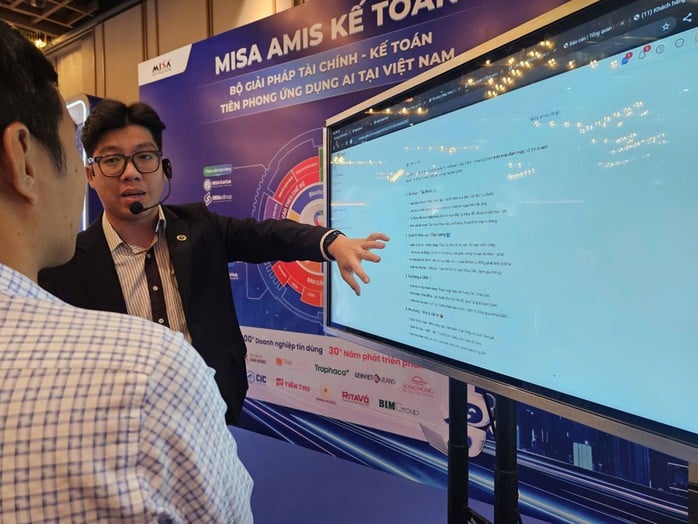
Introducing the Vietnamese company's AI-integrated financial and accounting management software at the event Corporate Governance in the AI Era in June 2025. Photo: LE TINH
This expert also proposed that the city soon develop a green bond and technology bond market to mobilize capital for key projects on AI, semiconductors, renewable energy, etc. This mechanism will help reduce financial costs and attract investors interested in sustainable development (ESG). In addition, preferential credit policies and guarantees for technology startups will be important resources, helping innovative companies access capital more easily. "The sandbox mechanism for fintech, decentralized finance and digital assets will create a safe testing corridor for innovative businesses, limiting legal risks. At the same time, the requirement for data transparency and periodic reporting will help management agencies closely monitor while still encouraging innovation," said Dr. Nguyen Duy Quang.
Mr. Vo Thanh Dang (Danny Vo), Vice President of the Association of Vietnamese Entrepreneurs Abroad, said that in the next 3-5 years, Ho Chi Minh City should prioritize the development of AI, semiconductors, big data and fintech to catch up with global trends and create a rapid spillover effect, but the sandbox is still a prerequisite. Experience from Singapore shows that the legal sandbox helps businesses test new models such as peer-to-peer lending (P2P Lending), digital asset transactions or non-traditional financial solutions; errors can be adjusted without legal risks, thereby promoting a breakthrough in the fintech industry. Ho Chi Minh City needs to build a real sandbox, not just a formal one on paper.
Seize the opportunity
According to experts, Resolution No. 05/2025/NQ-CP of the Government allowing a pilot crypto-asset market in Vietnam is an important and timely policy step, especially for megacities like Ho Chi Minh City. Mr. Michael Kokalari, Director of Macroeconomic Analysis and Market Research Department of VinaCapital fund management company, said that there are currently about 17 million Vietnamese people participating in cryptocurrency transactions, with a total annual transaction value of more than 100 billion USD. However, most of these activities take place on international exchanges. "The Government's goal is to move this activity from an informal market, dependent on foreign channels, to an official market that can be tax-managed and integrated into the domestic financial system. Integrating digital assets will open up a new capital mobilization channel, supporting digital economic growth," Mr. Kokalari emphasized.
Resolution 05 allows the formation of a domestic crypto-asset exchange, paving the way for the tokenization of assets such as real estate, fund certificates, gold, etc. From there, capital is fragmented, investment barriers for retail investors are lowered, liquidity increases and intermediary costs are reduced. Along with the sandbox testing mechanism for fintech, the capital mobilization process for startups and small and medium enterprises will be shortened, while attracting foreign investment capital into Ho Chi Minh City, creating strong financial momentum for digital economic development.
At the same time, Resolution No. 57-NQ/TW of the Politburo identifies science, technology and innovation as the central driving force for growth. Investment in research and development (R&D), digital infrastructure and high-quality human resources will be the levers to help improve productivity and added value of the economy significantly.
Dr. Tran Hai Linh, member of the Central Committee of the Vietnam Fatherland Front, Chairman of the Vietnam - Korea Business and Investment Association (VKBIA), expects Resolution 05 to open up great opportunities for Ho Chi Minh City to become a regional financial - digital technology center. "When capital flows from the crypto asset market are brought into the domestic financial system, the city will not only receive abundant capital but also promote the startup ecosystem, creating leverage for small and medium enterprises. If combined with a flexible sandbox mechanism for fintech, Ho Chi Minh City can test new models such as digital asset exchanges or real estate tokenization within a risk-controlled framework," said Mr. Linh.
According to him, to take advantage of this opportunity, Ho Chi Minh City needs to build a transparent mechanism, expanding space for domestic and foreign enterprises to participate. At the same time, developing an international financial center will help attract foreign direct investment (FDI), venture capital funds and private capital flows, creating a direct driving force for the digital economy. "An open, competitive and regionally connected mechanism will form a sustainable innovation ecosystem, where startups and small businesses can develop, and large corporations are encouraged to invest in R&D. When these factors are synchronized, Ho Chi Minh City will improve productivity, promote GRDP and become a true financial - digital technology center of the region" - Dr. Tran Hai Linh affirmed.
The region's "semiconductor valley"
According to Dr. Bui Xuan Minh, Head of the Semiconductor Design and Industry 4.0 Research Group, RMIT University Vietnam, Ho Chi Minh City has great potential to become the "semiconductor valley" of Southeast Asia. The city is currently home to many of the world's leading technology corporations such as Intel, Samsung, Marvell, etc., while neighboring provinces have advantages in industrial land, logistics and large-scale production - creating ideal conditions for the formation of a complete high-tech industrial cluster.
This vision is in line with Resolution 57-NQ/TW, which emphasizes the breakthrough role of science, technology and innovation. The new policy opens up more flexible opportunities in funding R&D, encourages public-private partnerships and attracts high-tech human resources, key factors for the semiconductor industry.
Dr. Xuan Minh believes that to realize this vision, Ho Chi Minh City needs to strongly apply preferential policies on investment in advanced semiconductor infrastructure, streamline licensing procedures, reduce taxes, provide financial support and encourage domestic enterprises to participate deeply in the value chain. In addition, it is necessary to synchronously plan high-tech zones, logistics centers, research and innovation zones across the region. "The city must focus on training 3,000-4,000 highly qualified engineers each year through scholarships, study incentives, attracting international experts and reforming semiconductor training programs. If implemented effectively, Ho Chi Minh City can completely become an important link in the global semiconductor supply chain by 2030" - Dr. Minh emphasized.
(*) See Lao Dong Newspaper from the issue dated October 3
Source: https://nld.com.vn/dong-luc-tang-truong-moi-cua-tp-hcm-thu-phu-cong-nghe-tai-chinh-19625100418560652.htm






![[Photo] Prime Minister Pham Minh Chinh launched a peak emulation campaign to achieve achievements in celebration of the 14th National Party Congress](https://vphoto.vietnam.vn/thumb/1200x675/vietnam/resource/IMAGE/2025/10/5/8869ec5cdbc740f58fbf2ae73f065076)



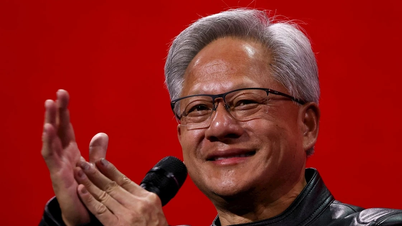


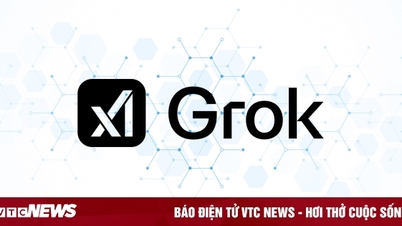










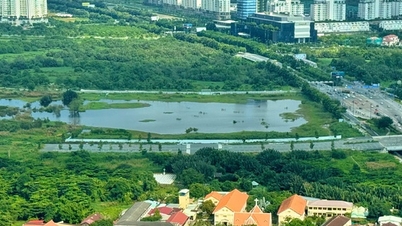

![[Photo] Bustling Mid-Autumn Festival at the Museum of Ethnology](https://vphoto.vietnam.vn/thumb/1200x675/vietnam/resource/IMAGE/2025/10/4/da8d5927734d4ca58e3eced14bc435a3)


























![[VIDEO] Summary of Petrovietnam's 50th Anniversary Ceremony](https://vphoto.vietnam.vn/thumb/402x226/vietnam/resource/IMAGE/2025/10/4/abe133bdb8114793a16d4fe3e5bd0f12)

![[VIDEO] GENERAL SECRETARY TO LAM AWARDS PETROVIETNAM 8 GOLDEN WORDS: "PIONEER - EXCELLENT - SUSTAINABLE - GLOBAL"](https://vphoto.vietnam.vn/thumb/402x226/vietnam/resource/IMAGE/2025/7/23/c2fdb48863e846cfa9fb8e6ea9cf44e7)
















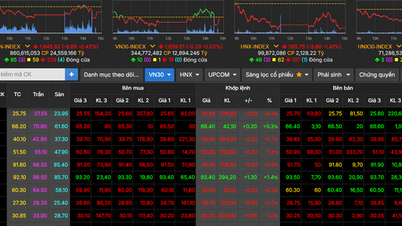

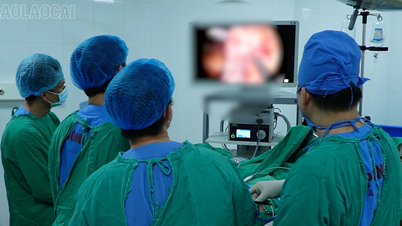


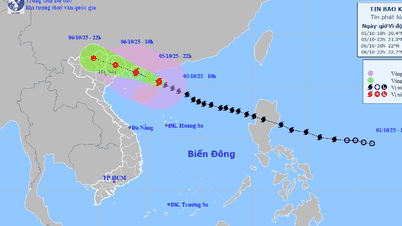

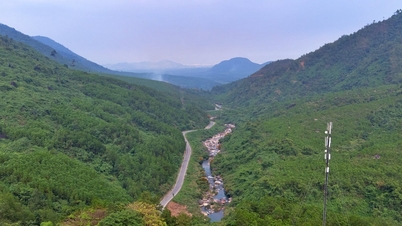












Comment (0)